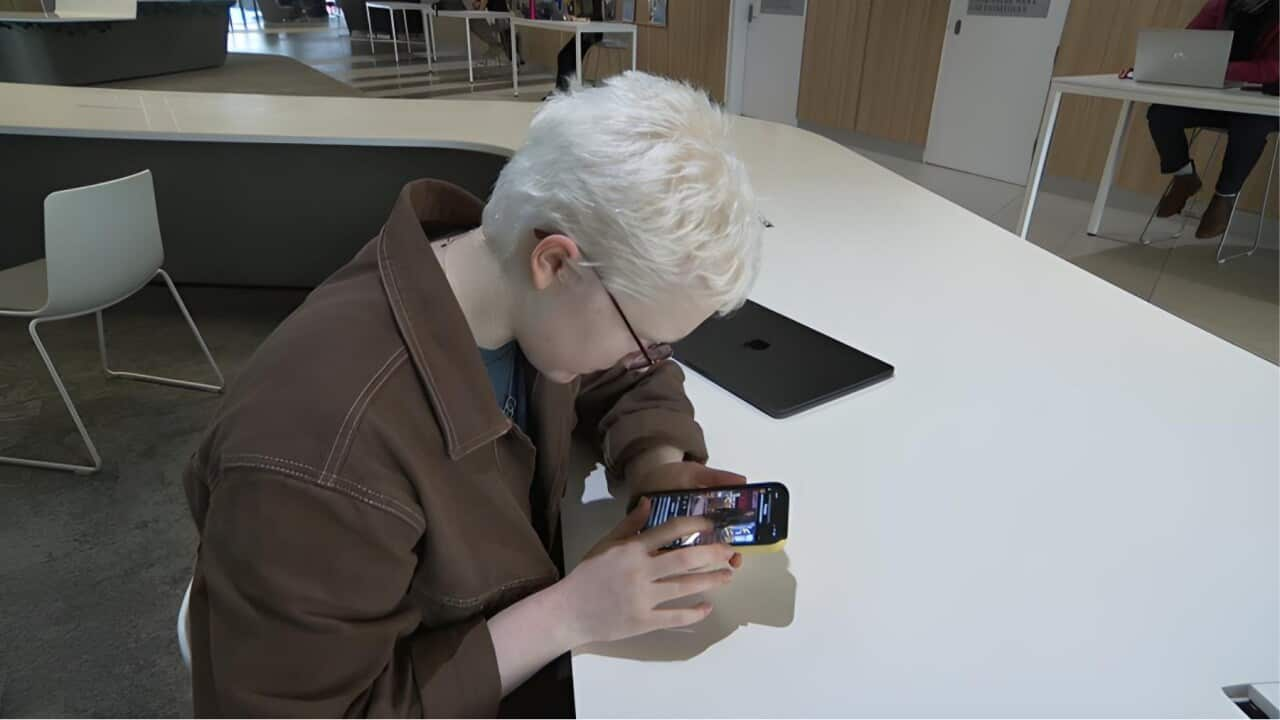TRANSCRIPT
It's something most don't think twice about, but for half a million Australians who live with low vision or blindness, accessing digital content is a daily challenge - meaning many miss out on connections and experiences most of us take for granted.
Zara Perry speaks from experience:
“It is also really important for social interaction and as a mechanism for establishing and maintaining that community that’s really essential for me particularly because of how hard it can be to get that social interaction due to my low vision.”
Zara Perry is just like any other 18-year-old, spending time scrolling on Instagram and Facebook.
She uses her residual vision and a screen reader which gives audio descriptions of some text.
“A woman in a black shirt and wearing glasses is standing outside of Coles holding two yellow Labrador puppies in her arms.”
Ms Perry says the audio description gives her a good idea of what's going on:
“As you can see there that's a really clear description of what's in the image, it's not super long not super convoluted but it gives enough context about what's going on.”
However it's not always foolproof.
She says the audio description is not always effective and requires the original content creator to enter useful descriptions when they upload the image.
“Often the content isn’t screen reader-accessible or the text is so small or funky fonts or for whatever reason I can’t see it with my residual vision and that can kind of culminate to make it this really frustrating blank spot in my feed.”
Research from Guide Dogs New South Wales reveals three quarters of people with low vision or blindness experience digital exclusion - with one third of those pointing to app content as the issue.
Tamara Searant is the organisation's General Manager of Social Change:
“A key factor in increasing social media accessibility will be social media users being aware of what accessible content could look like and taking action in making sure more people can get involved”
Often people can understand much of a video’s content merely by listening to its audio.
However if a video includes content that is only presented visually, such as on-screen text, graphics, or actions that are not obvious from the audio, then audio descriptions can be helpful as a screen reader won't be able to help.
Many broadcasters, streaming services and YouTube creators are already doing this.
“A thunderstorm in the day over a green field. A buffalo runs over the plain.”
Tamara Searant says audio descriptions for videos and information for screen readers for other content should not simply be an optional extra.
“Digital accessibility affects so many more people than that, it benefits everyone whether it’s people who are older people who speak English as a second language, other forms of disability, it’s really important.”
She says writing captions that are clear and concise are also recommended to help those with visual impairment.













